Related Research Articles

Louis Seymour Bazett Leakey was a Kenyan-British palaeoanthropologist and archaeologist whose work was important in demonstrating that humans evolved in Africa, particularly through discoveries made at Olduvai Gorge with his wife, fellow palaeoanthropologist Mary Leakey. Having established a programme of palaeoanthropological inquiry in eastern Africa, he also motivated many future generations to continue this scholarly work. Several members of the Leakey family became prominent scholars themselves.

Robert Broom FRS FRSE was a British- South African doctor and palaeontologist. He qualified as a medical practitioner in 1895 and received his DSc in 1905 from the University of Glasgow.

Dame Jane Morris Goodall, formerly Baroness Jane van Lawick-Goodall, is an English primatologist and anthropologist. She is considered the world's foremost expert on chimpanzees, after 60 years studying the social and family interactions of wild chimpanzees. Goodall first went to Gombe Stream National Park in Tanzania in 1960, where she witnessed human-like behaviours amongst chimpanzees, including armed conflict.

Richard Erskine Frere Leakey was a Kenyan paleoanthropologist, conservationist and politician. Leakey held a number of official positions in Kenya, mostly in institutions of archaeology and wildlife conservation. He was Director of the National Museum of Kenya, founded the NGO WildlifeDirect and was the chairman of the Kenya Wildlife Service.
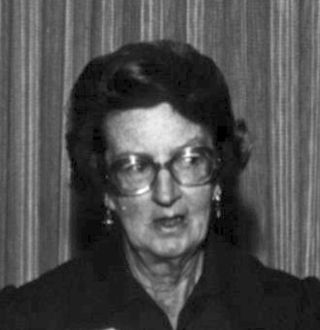
Mary Douglas Leakey, FBA was a British paleoanthropologist who discovered the first fossilised Proconsul skull, an extinct ape which is now believed to be ancestral to humans. She also discovered the robust Zinjanthropus skull at Olduvai Gorge in Tanzania, eastern Africa. For much of her career she worked with her husband, Louis Leakey, at Olduvai Gorge, where they uncovered fossils of ancient hominines and the earliest hominins, as well as the stone tools produced by the latter group. Mary Leakey developed a system for classifying the stone tools found at Olduvai. She discovered the Laetoli footprints, and at the Laetoli site she discovered hominin fossils that were more than 3.75 million years old.

Paranthropus boisei is a species of australopithecine from the Early Pleistocene of East Africa about 2.5 to 1.15 million years ago. The holotype specimen, OH 5, was discovered by palaeoanthropologist Mary Leakey in 1959, and described by her husband Louis a month later. It was originally placed into its own genus as "Zinjanthropus boisei", but is now relegated to Paranthropus along with other robust australopithecines. However, it is also argued that Paranthropus is an invalid grouping and synonymous with Australopithecus, so the species is also often classified as Australopithecus boisei.
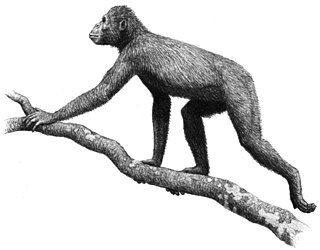
Proconsul africanus was an ape which lived from about 23 to 14 million years ago during the Miocene epoch. It was a fruit eater and its brain was larger than that of a monkey, although probably not as large as that of a modern ape.
Kamoya Kimeu was a Kenyan paleontologist and curator, whose contributions to the field of paleoanthropology were recognised with the National Geographic Society's LaGorce Medal and with an honorary doctorate of science degree from Case Western Reserve University.

The Peninj Mandible(Peninj 1), also called Natron mandible, is the fossilized lower jaw and teeth of an australopithecine specimen, likely that of Australopithecus boisei or a similar population. It was discovered in West Lake Natron, in Ngorongoro District of Arusha Region of Tanzania by Kamoya Kimeu, Glynn Isaac, and Richard Leakey in 1964.

The Trimates, sometimes called Leakey's Angels, is a name given to three women — Jane Goodall, Dian Fossey, and Biruté Galdikas — chosen by anthropologist Louis Leakey to study primates in their natural environments. They studied chimpanzees, gorillas and orangutans, respectively.

Proconsulidae is an early family of primates that lived during the Miocene epoch in Kenya, and was restricted to Africa. Members of the family have a mixture of Old World monkey and ape characteristics, so the placement in the ape superfamily Hominoidea is tentative; some scientists place Proconsulidae outside of Hominoidea in a separately superfamily Proconsuloidea, before the split of the apes and Old World monkeys.
Colin Louis Avern Leakey was a leading plant scientist in the United Kingdom, a Fellow of King's College, Cambridge and of the Institute of Biology, and a world authority on beans.
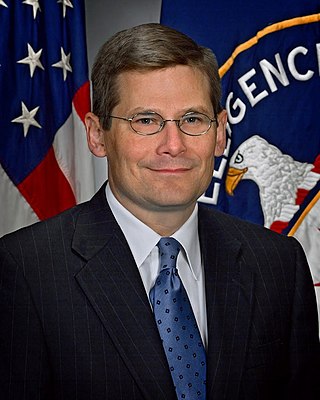
Michael Joseph Morell is an American former career intelligence analyst. He served as the deputy director of the Central Intelligence Agency from 2010 to 2013 and twice as its acting director, first in 2011 and then from 2012 to 2013. As a CIA analyst he served as presidential daily briefer to George W. Bush, including on the morning of September 11, 2001. In his book, The Great War of Our Time, Morell defends the use of drones by both the Bush and Obama Administrations against suspected terrorists and he explains the CIA's use of enhanced interrogation techniques by the Bush Administration. He is now Senior Counselor and the Global Chairman of the Geo-Political Risk Practice at Beacon Global Strategies LLC, a consulting firm in Washington, D.C.
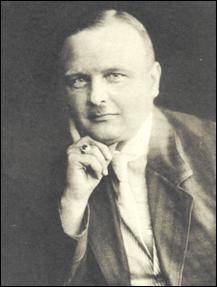
Hans Gottfried Reck was a German volcanologist and paleontologist. In 1913 he was the first to discover an ancient skeleton of a human in the Olduvai Gorge, in what is now Tanzania. He collaborated with Louis Leakey in a return expedition to the site in 1931.

Anna Katherine "Kay" Behrensmeyer is an American taphonomist and paleoecologist. She is a pioneer in the study of the fossil records of terrestrial ecosystems and engages in geological and paleontological field research into the ecological context of human evolution in East Africa. She is Curator of Vertebrate Paleontology in the Department of Paleobiology at the Smithsonian Institution's National Museum of Natural History (NMNH). At the museum, she is co-director of the Evolution of Terrestrial Ecosystems program and an associate of the Human Origins Program.
Kariandusi prehistoric site is an archaeological site in Kenya. Located on the southeastern edge of the Great Rift Valley and on Lake Elmenteita, Kariandusi is an African Early Stone Age site dating to approximately 1 million years ago.
Shirley Cameron Coryndon (1926–1976) was a British paleontologist and authority on fossil hippopotami.
Barbara J. King is professor emerita, retired from the Department of Anthropology at the College of William & Mary where she taught from 1988 to 2015, and was chair of the department of Anthropology.

The East Africa Kennel Club is the official kennel club of the East African countries of Kenya, Uganda, Tanzania, Rwanda and Burundi.
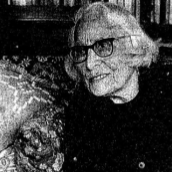
Henrietta Wilfrida "Frida" Leakey, also known as H. Wilfrida Leakey, was a British teacher who discovered a gorge that was named FLK or "Frida Leakey Korongo". The gorge was the site of ancient stone tools and important human fossil discoveries. Leakey was the first wife of paleoanthropologist and archaeologist Louis Leakey. She became a leader in the Women's Institute and a County Councillor.
References
- 1 2 Wood, Mark (28 March 2013). "I Wonder What They're Thinking". Pomona College Magazine. Retrieved 17 October 2020.
- ↑ Wood, Mark; Vest, Patty (8 July 2020). "Backstories: Virginia Morell '71". Pomona College Sagecast (Podcast). Retrieved 17 October 2020.
- ↑ "Virginia Morell". Simon & Schuster . Retrieved 17 October 2020.
- ↑ "Virginia Morell". psychologytoday.com. Retrieved 2 April 2022.
- ↑ "Virginia Morell". creativenonfiction.org. Retrieved 2 April 2022.
- ↑ "Virginia Morell". hakaimagazine.com. Retrieved 2 April 2022.
- 1 2 Maddox, Brenda (6 August 1995). "Hominid Dreams". The New York Times . Retrieved 17 October 2020.
- ↑ Bailey, Geoff (1999). "Book review of: Morrell, V. Ancestral passions. The Leakey family and the quest for humankind's origins . Simon & Schuster, New York: 1995". Archives of Natural History. 26 (3): 435.
- ↑ "Animal Wise: The Thoughts and Emotions of Our Fellow Creatures". kirkusreviews.com. Retrieved 2 April 2022.
- ↑ Hertzberg, Richard. (2014). "On the Frontiers of Animal Research: A Conversation with Virginia Morell". lareviewofbooks.org. Retrieved 2 April 2022.
- 1 2 Kawczynska, Claudia (February 2013). "Book Review: Animal Wise". The Bark. Retrieved 17 October 2020.
- ↑ Raymond, Midge. (2013). "Book Review: Animal Wise: The Thoughts and Emotions of Our Fellow Creatures". ecolitbooks.com. Retrieved 2 April 2022.
- ↑ "Book Review: Animal Wise - The Thoughts and Emotions of Our Fellow Creatures". kqed.org. Retrieved 2 April 2022.
- ↑ "Animal Wise: The Thoughts and Emotions of Our Fellow Creatures". penguinrandomhouse.com. Retrieved 2 April 2022.
- ↑ Gross, Liza (20 February 2013). "Book Review: Animal Wise - The Thoughts and Emotions of Our Fellow Creatures". KQED . Retrieved 17 October 2020.
- ↑ "Becoming a Marine Biologist". publishersweekly.com. Retrieved 2 April 2022.